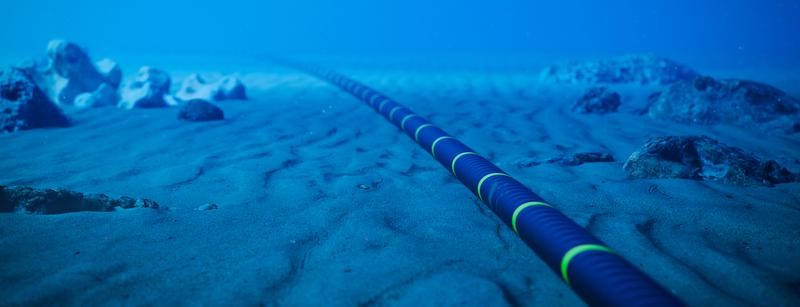Description

Disclaimer: Copyright infringement not intended.
Context
- During the unprecedented COVID-19 pandemic, the one thing that connected us virtually was the internet.
- Along with quantum optics, fibre optic communication stands on the cusp of a new era.
Details
- Fiber optic cables are strands of optically pure glass or plastic fibers that transmit data using light waves.
- They're widely used for high-speed data transmission, offering numerous advantages over traditional copper cables, including higher bandwidth, faster speeds, and immunity to electromagnetic interference.
Origins of Fiber Optic Cables
- Early Demonstrations: In the early 19th century, researchers like Jean-Daniel Colladon and Jacques Babinet demonstrated the confinement of light within narrow streams of water or bent glass rods, which was a precursor to the concept of guiding light through different mediums.
- Initial Applications: The concept found early applications in areas like medicine and defense. In the 1920s, there were demonstrations of transmitting images through glass fibers. In the 1930s, doctors used bundles of thin fibers for medical examinations and surgical illumination.
- Breakthroughs in Development: Major advancements occurred in the mid-20th century. In 1954, Harold Hopkins and Narinder Singh Kapany transmitted images using a bundle of optical fibers. Lawrence E. Curtiss developed the first glass-clad fibers, enhancing their suitability for long-distance data transmission. In 1960, Theodore Maiman developed the first laser, an excellent optical source that contributed significantly to optical communication research.
- Refinement of Glass Fibers: Research in the 1960s by Charles Kao and his colleagues discovered that impurities in the glass caused signal attenuation. Their solution involved melting high-purity fused silica at high temperatures to reduce signal decay within glass fibers. By 1971, Corning Glass Works achieved a significant reduction in signal loss, marking a breakthrough in fiber optics.

Structure of Fiber Optic Cables
- Core: The innermost part of the cable, through which light travels. It's made of glass or plastic and is designed to carry light signals.
- Cladding: Surrounds the core and helps in trapping the light within the core by using a lower refractive index than the core. This prevents signal loss due to light leakage.
- Buffer Coating: A protective layer covering the cladding to shield the fiber from moisture and damage.
Types of Fiber Optic Cables
- Single-Mode Fiber (SMF): Used for long-distance communication. It has a smaller core, allowing a single ray of light to travel, reducing signal attenuation.
- Multi-Mode Fiber (MMF): Suitable for shorter distances. It has a larger core, permitting multiple light rays to travel simultaneously, but it's more susceptible to dispersion.
- Plastic Optical Fiber (POF): Made of plastic rather than glass. It's less expensive and easier to work with but has lower bandwidth and shorter transmission distances.
How Fiber Optic Cables Work
- Transmitting Data: Data is converted into light pulses using a laser or LED at one end of the cable. These pulses travel through the core of the fiber optic cable.
- Signal Loss and Amplification: Signals can weaken due to attenuation (signal loss). Amplifiers are used along the cable to boost the signal periodically.
- Receiving Data: At the receiving end, a photodetector converts the light pulses back into electrical signals, which are then decoded into the original data.
Advantages of Fiber Optic Cables
- High Bandwidth: Capable of carrying more data over longer distances at higher speeds compared to copper cables.
- Low Latency: Faster transmission speeds and minimal signal degradation result in lower latency.
- Security: Difficult to tap into without physical access, making them more secure for data transmission.
- Immunity to Electromagnetic Interference (EMI): Unlike copper cables, fiber optics are not affected by electromagnetic interference.
Applications
- Telecommunications: Used extensively in internet connections, telephony, cable television, and networking.
- Medical Imaging: Used in endoscopes and other medical imaging devices due to their flexibility and ability to transmit light.
- Military and Aerospace: Employed in secure communications and harsh environments due to their durability.
- Data Centers: Facilitate high-speed data transmission between servers and storage devices.
Maintenance and Handling
- Avoid Bending Too Tightly: Excessive bending can damage the cable and affect signal transmission.
- Protective Measures: Proper installation and protective enclosures safeguard the cables from physical damage and environmental factors.
- Regular Inspections: Periodic checks ensure the integrity of the cables and connectors.

Future of Fiber Optic Cables
- Quantum Technologies: The integration of fiber optic networks with quantum technologies holds promise for secure communication and advancements in quantum science. Governments are investing in missions to promote quantum technologies, enhancing the potential applications of fiber optics.
- Continued Advancements: Ongoing research and development aim to further improve fiber optic technology, enhancing data transmission rates, reducing signal loss, and expanding applications across various industries.
Conclusion
Fiber optic cables have revolutionized communication and data transmission, offering high reliability, speed, and security across various industries and applications.
|
PRACTICE QUESTION
Q. How have advancements in fiber optic technology revolutionized telecommunication and various industries? Examine the significance of fiber optics in enabling high-speed data transmission and its potential for future advancements, particularly in the context of emerging quantum technologies. (250 Words)
|











